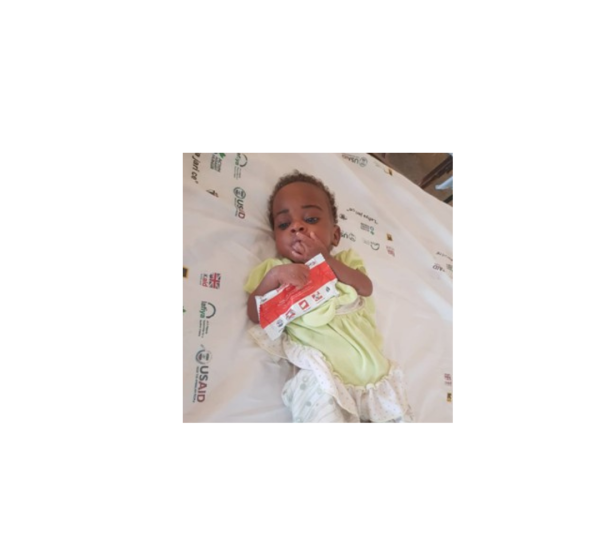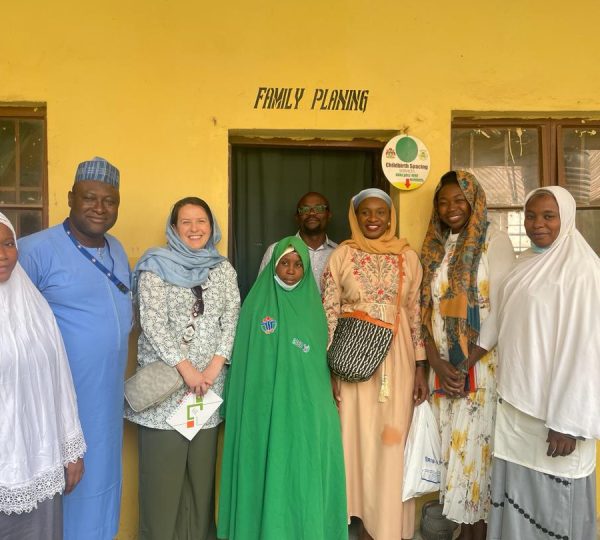Universal Health Coverage of Insecticide Treated Nets (ITNs) mass distribution in Nigeria: Reaching the hard-to-reach and security challenged communities.
By Gbue Denen Daniel, John Ocholi, Christopher Dangana, Sesugh Oryiman, Ifeanyi Udoye, Dr Ernest Nwokolo
Since 2009, Society for Family Health Nigeria has distributed over 100 million mosquito nets in nineteen campaigns across 12 states in Nigeria and provided over 53 million people with ITNs to prevent Malaria. Net campaign is a viable strategy in the control of malaria in Nigeria with the highest number of global malaria cases (27 % of global malaria cases) and the highest number of deaths (32 % of global malaria deaths) in 2020. The country accounted for an estimated 55.2% of malaria cases in West Africa in 2020.
The 2021 National Malaria Indicators Survey shows some improvement with malaria prevalence falling from 42% in 2010 to 22% in 2021. Ownership of insecticide-treated nets (ITNs) increased from 42% in 2010 to 56% in 2021, while usage among the most vulnerable populations improved from 29% to 41% for children and from 34% to 50% for pregnant women. This article discusses the benefits of using insecticide-treated nets for malaria prevention in Nigeria with a focus on efforts to ensure the hard-to-reach and security challenged communities are covered with ITNs during mass distribution campaigns implemented by the Society for Family Health (SFH) Nigeria.
Hard-to-reach communities in Nigeria are communities in difficult terrains, mountainous areas, separated by rivers, inaccessible and non-motorable roads, while security challenged communities are communities with reoccurring issues of security insurgencies, banditry, kidnapping, and living in communal crises. All these make it almost impossible for beneficiaries to be reached with malaria commodities like the ITNs. SFH in her effort to ensure that the most at-risk persons have access to commodities like ITNs, developed a strategy for implementing the campaign in Complex Operation Environment (COE) which has proven to be effective in getting nets to all communities in the states for the mass campaign including the hard-to-reach and security challenged communities.
Prominent among the strategies used by SFH to distribute ITNs to target beneficiaries in hard-to-reach communities include Community involvement of leaders from planning to implementation as well as community-led monitoring, and recruiting campaign personnel from the local communities, which may sometimes include the vigilantes going beyond security role to mobilise and distribute ITNs. This ensures the mobilisers and distributors live and ply their trade in the affected communities who have adequate knowledge of easy navigation and interaction in the communities to enable them to carry out the ITN distribution within their communities. Setting up of Security Advisory Team comprising all heads of operations units from security organisations and agencies (Army, Police, DSS, Civil defence, Vigilante, Forest guards, etc) in the state down to the community provided the tactical guidance to ensure security tips and responses are set in place to protect the entire process of the campaign from logistics of nets to the personnel and beneficiaries. In some very high-security sensitive locations like Birnin Gwari, armed security personnel were deployed who successfully escorted net deliveries to distribution hubs. Logistics for reaching the hard-to-reach communities saw the use of non-conventional but localised means of transportation such as donkeys and cows in addition to canoes, bikes, and wheelbarrows to move the nets. To effectively monitor the activities in the hard-to-reach community, monitoring using the Ward Development Committee (WDC) residing in the wards of the LGAs were mobilised to provide a constant update on the implementation in the communities. The WDCs were also used to provide guidance on how to navigate security prone areas and identification/validation of households for distribution.
SFH as an organisation is committed to the national goal of Universal Health Coverage (UHC) for ITNs even in hard-to-reach and security challenged communities to serve the most at risk and vulnerable populations to maximise the gain and benefits of owning and using ITNs. Using an ITN daily will provide protection against mosquito bites: The primary benefit of insecticide-treated nets is their ability to protect against mosquito bites. Mosquitoes are the primary carriers of malaria, and using ITNs can significantly reduce the chances of being bitten by an infected mosquito. Reduction in malaria transmission using the ITNs: Insecticide-treated nets not only protect individuals from mosquito bites but also reduce malaria transmission within communities. By decreasing the number of infected mosquitoes, the chances of malaria transmission are reduced, leading to a lower incidence of malaria in the population. Cost-effective from the consistent use of the ITN by community members: Insecticide-treated nets are a cost-effective way to prevent malaria. They are relatively inexpensive compared to other malaria prevention methods, such as antimalarial drugs or indoor residual spraying. Furthermore, ITNs only require a one-time investment and can last for several years, making them a cost-effective long-term solution for malaria prevention. Insecticide-treated nets are easy to use and require no special training. They can be easily hung over a bed or sleeping area, providing protection for individuals throughout the night.
Other benefits of using the ITN by community members include protection for vulnerable populations. Insecticide-treated nets are particularly beneficial for vulnerable populations, such as pregnant women and young children, who are at a higher risk of contracting malaria. By protecting these populations, ITNs can significantly reduce the incidence of malaria-related morbidity and mortality. Continued use of ITN improves health outcomes: The use of insecticide-treated nets can lead to improved health outcomes in communities. By reducing the incidence of malaria, individuals are less likely to suffer from the complications of the disease, such as anaemia, cerebral malaria, and organ failure.
According to one net beneficiary in Birnin Gwari LGA Malam Isah Abdullahi said ‘I am overwhelmed by the guts of your organisation to come to this LGA at this time of insecurity to distribute mosquito nets when other organisations and even Government abandoned us’.
Another beneficiary, Musa Ado said, ‘I never thought the ITN mass distribution will get to our community because it is far away and divided by a river. But I am very happy to receive the net, thank you SFH for bringing the nets to our doorstep’.
In conclusion, the use of insecticide-treated nets is a highly effective and cost-effective way to prevent malaria and efforts should be made to ensure all persons in Nigeria, especially the most at-risk children under five years and pregnant women wherever they live are provided access to ITNs for protection. By reducing the incidence of malaria, ITNs can significantly improve health outcomes and reduce the burden of the disease on individuals and communities. Therefore, it is essential to promote the use of insecticide-treated nets in Nigeria and other malaria-endemic regions worldwide.
SFH is dedicated and committed to increasing access and utilisation of ITNs in Nigeria towards the achievement of zero malaria.



